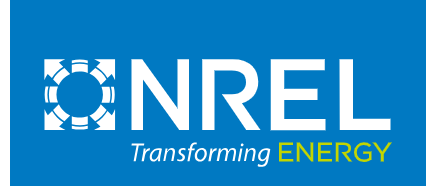The United States has put in motion the Sustainable Aviation Fuel (SAF) Grand Challenge, which seeks to expedite the development of alternative fuel pathways that offer a minimum of a 50% reduction in life cycle greenhouse gas emissions compared to conventional jet fuel. The SAF Grand Challenge also establishes ambitious domestic production volume targets of 3 billion gallons of SAF per year by 2030 and a stretch goal of meeting 100% of the projected domestic aviation fuel demand of approximately 35 billion gallons per year by 2050.
In 2023, the United States consumed approximately 23 million gallons of SAF collectively across various small-scale operations. To hit the 2030 target of 3 billion gal/yr, this means about a 100% compound annual growth rate (CAGR) in volumetric SAF production (about 130-times scale-up).
In March 2024, the National Renewable Energy Laboratory (“NREL”) published a study describing the technical challenges that need to be addressed in order to comply with the SAF volume targets.
They concluded that independent of the chosen feedstock and conversion technology to produce SAF, numerous challenges persist across production in seeking to drive down fuel cost and CI. Arguably one of the greatest near-term challenges to achieving the SAF Grand Challenge goals is technology scaling.
NREL makes a compelling argument that one possible avenue for rapid expansion would leverage existing assets from the first-generation bioethanol industry. In 2023, the nameplate capacity for the U.S. bioethanol industry was more than 18 billion gallons of ethanol annually. However, due to mandated EPA renewable identification number volume blend limits, U.S. production was only 15 billion gallons. In other words, the refineries operated at an average capacity of about 87%. If these assets were utilized to their full potential and leveraged the additional 2+ billion gallons per year of bioethanol within existing infrastructure, combined with carbon capture and storage or other strategies to minimize the CI footprint, it could present a near-term opportunity to help reach the 2030 Grand Challenge goals via ASTM-approved ATJ pathways. In addition, other high-technology-readiness-level strategies such as HEFA must continue to expand with diversifying FOG-type petroleum refinery feedstocks, with lipids or other compatible intermediate streams from energy crops, algae, and lignocellulosic biomass.
To achieve the goal of 35 billion gallons of SAF per year by 2050, volumetric production must increase by a factor of 12 from the 3-billion-gal/year 2030 target. In terms of CAGR, this increase represents an annual growth rate of about 13% over 20 years (2030– 2050). However, when viewed from the current 2023 production numbers, this represents an average CAGR of about 31% that will need to be sustained over the next 27 years to hit this target. While lower than the CAGR required to achieve the 2030 target, maintaining such a growth rate over a long period remains ambitious, and every year that new projects are delayed, the more difficult the achievement becomes. Industry and policymakers must act swiftly and decisively to keep these targets within grasp.
However, if the 35-billion-gal/yr target were met entirely with e-fuels, estimates show that nearly 3,500 TWh of electricity would be required, representing a more than 5-times increase from current wind and solar generation levels and about 85% of the total electricity consumed in the United States.
Production of SAF from CO2 also has its challenges. On the surface, CO2 could not be more different than conventional petroleum feedstock; CO2 has no intrinsic energy content, is nearly 73% oxygen by mass, and is completely devoid of hydrogen. Therefore, whereas petroleum starts from a place of molecules with high molecular weight and high energy that are cracked down to size, CO2 must be reconstructed molecule by molecule via energy-intensive processes to establish new carbon-carbon and carbon-hydrogen bonds to create fuels and products. While the precise energy demand depends on the conversion process utilized, estimates suggest an energy intensity on the order of 100 kWh required per gallon of CO2-derived SAF.
It is our company’s opinion that irrespective of the SAF production pathway chosen, it is critical for the scaling of production, to develop a large supply of COST-EFFECTIVE hydrogen.
Many technical challenges remain warranting additional R&D for lower unit capital expenses, improved stability and durability, higher energy efficiencies and cost per gallon management, including temporary federal tax incentives.
For additional information, please contact the company.



